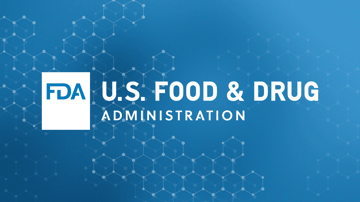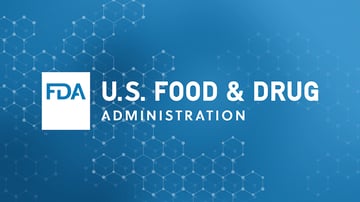What do we mean when we talk about traceability? As the industry moves beyond one-up-one-back product tracking, how will we define and standardize transparency within the food system?
As food quality and safety standards evolve, so too do the concepts driving industry innovation. Understanding food traceability, in particular, has been a moving target for years as expectations around transparency between supply chain partners continues to evolve. However, with the FDA’s recent release of proposed FSMA 204 enhanced traceability requirements, consensus is being built around what food traceability means in the New Era of Smarter Food Safety.
What is Traceability?
Traceability defines the ability to identify a product through locations, forms and processes over time, from creation to consumption or disposal. Traceability is a concept that applies across industries and can vastly support the verification of important product information such as the origin, path of exchange or transportation, in addition to product transformations. Traceability is closely related to safety, quality assurance and business continuity and efficiency, as true traceability enables transparency by way of actionable data.
For the food industry specifically, the FDA defines traceability in terms of recording and understanding production, saying, “Food traceability is the ability to follow the movement of a food product and its ingredients through all steps in the supply chain, both backward and forward. Traceability involves documenting and linking the production, processing, and distribution chain of food products and ingredients.”
Antiquated notions of traceability employ a one-up-one-back standard, in which a supply chain owner maintains a limited view into product tracking information, only keeping records of direct suppliers or customers. This standard has been prevalent throughout the food industry since it was codified in the Bioterrorism Act of 2002. Today, traceability is beginning to be synonymous with whole chain traceability, which enables visibility into a product’s full journey. When an industry has achieved true, whole chain traceability it should be tenable to identify product information across all nodes in the product journey.
The shift towards understanding traceability as the visibility into whole chain product information is largely due to modern expectations around product safety and withdrawal standards, as well as the ubiquity of technological advancements such as machine learning and IoT across industries. Consumers and business leaders alike have normalized the need for technological infrastructure and effective data capturing and sharing practices.
The Importance of Traceability in the Food System
Historically, compliance with safety regulations, such as the historic Food Safety Modernization Act (FSMA), has driven the adoption of new traceability recordkeeping standards within the food industry. However, as the first wave of FSMA rules have passed key compliance dates, many US businesses have begun to see the merits of food chain modernization independent of third-party mandates.
Laying the groundwork of digital supply chain management has shown ROI for major brands tracking, auditing and processing supplier information at scale. For others, a systemic approach to supplier verification and recordkeeping is foundational to promoting a mission that resonates with ethical consumerism. And, through the adoption of food industry standards like GS1, foodservice operators have seen annual cost avoidance to the tune of $1.3 million. Companies that have started early with digitization see the move towards traceability as one that will improve efficiency and open new doors for effective consumer protection in the age of big data.
However, reaping the full benefits of traceability requires coordination and consensus across supply chain partners. Understanding any single product is conditional on a navigable food system, and deriving more sophisticated insights requires accurate and normalized datasets. Major regulatory bodies in both the US and Europe sponsored research has shown the transformational potential of a digital, traceable food system.
“The conversation has really shifted across leading brands and at industry work groups," FoodLogiQ VP of Supply Chain Strategy and Insights Julie McGill says regarding industry sentiment. "People are ready to collaborate and are eager to explore the possibilities of leveraging technology and other tools to create a safer, more connected digital food system. Innovative companies understand that traceability is a clear path to that, and the resistance to adoption has really dissipated as successful adopters are realizing benefits across their organizations. I think the industry understanding of emerging technologies has improved tremendously, and people are excited to see where AI, IoT or RFID can take their work.”
Understanding Tech-Enabled Traceability
Within the food industry, whole chain traceability is part and parcel of tech-enabled traceability, which relies on data digitization to capture, store and share information. Many of the key benefits afforded by supply chain transparency are only tenable via the aggregation and availability of digital records. Without traceability technology, the industry will not be able to build robust machine learning models, and food safety response times will remain throttled by manual processes and increased human error. Supply chain interoperability will further enable multiple stakeholders to share and leverage digitized data to close the loop in investigations, reporting or consumer trends as they relate to the entire food system.
Tech-enabled traceability is a core element of the FDA’s New Era of Smarter Food Safety, which the initiative blueprint states will “help protect consumers from contaminated products by doing rapid tracebacks, identifying specific sources and helping to remove products from the marketplace as quickly as possible when necessary.” And, citing food supply system weaknesses highlighted during the coronavirus pandemic, the FDA continues, “this will also create the transparency needed to anticipate and help prevent supply chain disruptions in a public health emergency, such as a pandemic.”
The recent proposed FSMA section 204 rule outlines a number of Critical Tracking Events (CTEs) and Key Data Elements (KDEs) that will likely be required for numerous food products in the coming years. The events and corresponding data elements define product information that must be captured during a product journey from end-to-end. Proposed requirements are dependent on the product, entity type and event type, but often include numerous elements such as time, location, lot code, quantities or other units, business identification information and more. The proposed rule, which is heavily informed by the core tenets of the New Era of Smarter Food Safety initiative, does not mandate the use of technology. However, in cases of a major recall, the drafted rule states that electronic records may be required within 24 hours of a request from the FDA, something that food companies will struggle to do in the absence of tech-enabled traceability.
Traceability Technology
Once implemented, traceability technology opens doors, not only individual supply chain nodes, but for the entire food industry. A digital food system narrows the scope of corrective actions, improves communication between entities and will allow for expansive efficiency and risk analysis. By taking the proper initial steps, these benefits are not only achievable, but they are within grasp.
FoodLogiQ has partnered with numerous companies at all stages of the traceability journey, and supported major brands in their advancement of the field as a whole. Our team is ready to council you on the next step, whether your team is moving suppliers off of paper records, or ready to move beyond one-up-one-back digital recordkeeping.
Tag(s):
Traceability
Other posts you might be interested in
View All Posts
Traceability
6 min read
| January 29, 2021
Gearing up for Traceability 2.0 with FSMA
Read More
8 min read
| November 9, 2021
Countdown to Compliance: Preparing for the Proposed FSMA 204 Rule's Finalization
Read More
Food Industry
8 min read
| March 28, 2023

